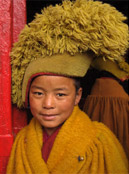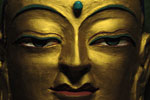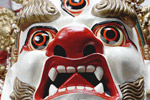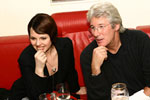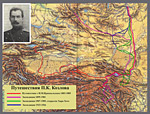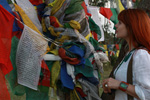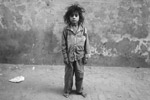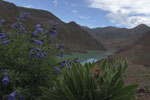|
|
Festival «Tibet-2005»
Festival “TIBET: traditions, art, philosophy” took place in autumn 2004 and was a great success. In 2005 it had its continuation. On July,2nd , 2005, within the frames of the festival, over again Tibet House Moscow organized the concert in Moscow International Performance Arts Center on Red Hills. The program of the concert included overtone chanting of Gyudmed monks, performances of musicians and dancers from Nepal and Tibet, and also famous artists from the Buddhist republics of Russia: Kalmykia, Buryatia and Tuva. Special guest of the festival concert is Boris Grebenschikov. The concert took place on the jubilee year, when all over the world 70 years anniversary of the spiritual leader of Tibet His Holiness Dalai-lama XIV was celebrated.
Video
Exhibitions of festival «Tibet-2005»
 |
Rituals and ceremonies, performed by Tibetan monks from Gyudmed monastery, invariably excite enormous interest of Russian public. Combining the elements of ancient art and Buddhism and giving the opportunity to touch the culture of Tibet, their overtone chanting fascinates really. Gyudmed monastery’s lamas are considered to be the best in what they do in Tibetan society: Dalai-lama invites them to make the most important ceremonies.
Without any exaggeration one can call Tibetan monks’ overtone chanting the visiting card of Tibet. In any film, in any musical composition about the Legendary Roof of the World, one can hear their low voices of a startling depth and power, bringing with them the energy of utterly other, unknown, but magnetic world.
|
 |
Loten, meaning in Tibetan “White Crane” is the artist’s stage name. His real name is Namling Lobsang Tenzin. The son of Tibetan refugees, he was born in Dharamsala in 1963. At the age of fifteen his parents gave him danien, sixstring Tibetan lute as a present. That defined his further fortune… |
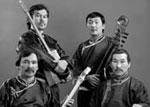 |
Tuvinian group “Huun-Huur-Tu” is undoubtedly for already 10 years is the most famous musical project of all former USSR in the world (not taking into account the performers of classical music and pop-duet “Tatu”).
Music of Huun-Huur-Tu” is unique, magic; it absorbed all the heritage of Tuvinian folklore, tradition of throat chanting, and it develops this inheritance. The group is the elite of the world music of the planet. Since 1993 the group took part in almost all big jazz and even rock world music festivals, it gave around thousand concerts on all the continents, made 16 concert tours around USA and Canada, many times performed in all the countries of Europe, Japan, Australia, Mexico, Hong Kong, Singapore, Malasia.
|
 |
Songs and Dances of the Tibetan plateau
by "Gangjong Doeghar" (Kalimpong, India)
“These dancers and musicians never saw their motherland, but anyway
with pride and professionalism they bring to the world the culture of the
Snow Country”.
Hindustan Times |
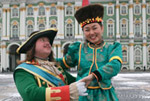 |
Badma-Handa was born in the Inner Mongolia – the region of the northern China – in 1979 in a buryatian family. Her grandmother and grandfather escaped from the communist regime repressions of the Soviet Union at the beginning of the thirties. The refugees tried to keep together, preserving the language, traditions and a national dignity. The songs that Badma-Handa sings are the old folk buryatian songs, almost forgot at their homeland because of many years of suppression of the true national values of the Buddhists and Buddhism in the USSR, but they continued living in their authentic way in a small buryatian community on the territory of China. |
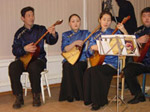 |
Amazing melodies of the endless kalmykian and Mongolian prairies, the instruments with the strange voices and fairy-tale names: tovshur, huchir, yatkha, shanz, jinginur… These instruments sounded in the ancient times, when the great heroes-giants from kalmykian epos ‘Jangr” lived, fighting the enemies and protecting a precious Buddhist teaching about love and compassion. These instruments sang their doleful songs in the 40-ties, when the Buddhist temples built by the nomads were destroyed, when kalmykian lamas, who returned from many years of studies in Tibet were shot, and common people were sent to the exile to Siberia. |
|
|
![]()
![]()
![]()
![]()
